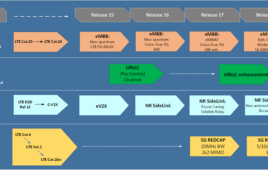There are rumblings that Google Voice could change the telecom industry in fundamental ways. A new Google-based voice service combined with the sheer size of the company’s existing user base is raising some eyebrows around the industry.
“I think the implications are pretty far reaching … Anyone who is using Gmail can initiate a free voice call from their computer using whatever phone you want,” says Hal Steger, vice president of marketing for Funambol.
The technology being used has been employed by JahJah for years. The user enters the number for the phone they’d like to use and the number for the phone they’d like to call and the service simultaneously rings both numbers, placing a free voice call.
Yesterday, Google said the service is open to Grand Central users and should be available to the general public within the near future. The company did not give a definitive timeline for general release.
Google bought Grand Central, an Internet-based voice service, back in July of 2007. Since then, it’s been using Grand Central as a starting point for the evolution of Google Voice.
The new service provides users with one life-long “uni-number” that links to all the user’s other phone numbers (such as landline, cell, work, hotel). One call to that single Google Voice number can ring a handful of lines.
Google says the service will offer free transcription and search of voicemails, free U.S. calls, Web-based filing and browsing of text messages, call blocking and filtering features, free conference calls, as well as incredibly cheap international calls (2-3 cents per minute).
Skype may be the first to feel the impact. Google Voice differs from Skype in that it isn’t a VoIP solution but rather Internet-based telephony. But the extent of Google’s service and the breadth of offerings far exceed those currently offered on the Skype service. International rates also will be cheaper than those on Skype.
Skydeck, a service that is almost identical to the one Google is rolling out, may see increased competition as well. Skydeck was a 2009 SXSW Technical Achievement Web Awards Finalist and was given the Boldest Idea award at MobileBeat in 2008. The service is currently available for $9.95 per month. If Google’s service is free, where does that leave a small start-up like Skydeck?
But if services such Skype and Skydeck are feeling Google’s shadow, operators are undoubtedly watching carefully as well. “The broader implications for the mobile industry is that Google is starting to encroach on the turf of the mobile operators. They’re starting to provide voice capabilities,” Steger says.
Steger doesn’t see any immediate regulatory backlash in the near future, but he did say that things could get interesting down the line. “If it gains a lot of momentum in the market … then I think you’re going to hear a lot of bellyaching from mobile operators around the world about how Google is affecting their business,” he says.
Steger sees the Android platform as being affected as well. Because Android is essentially a free platform and developers will be able to cheaply integrate the new Google Service on Android handsets, operators may shy from carrying those handsets on their networks.




